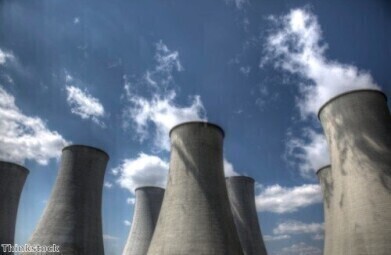Environmental laboratory
Is Sellafield inching towards nuclear catastrophe?
Dec 07 2023
Sellafield, located on England's north-west coast, is a multifaceted site embodying the complexities of the nuclear age. Its origins lie in the Cold War, where it played a pivotal role in the UK's nuclear weapons development and later hosted Calder Hall, the world’s first commercial nuclear power station. However, Sellafield's legacy is marred by incidents like the 1957 Windscale fire, one of Europe's worst nuclear accidents, which released widespread radioactive contamination.
The financial and environmental challenges of Sellafield are immense. The site's decommissioning and management costs contribute significantly to the UK's nuclear cleanup budget, estimated at £263 billion. These costs are exacerbated by the necessity of managing the site's vast amounts of radioactive waste. Despite these challenges, Sellafield remains a cornerstone of the local economy, offering essential employment in a region with few alternatives.
Internationally, the site has raised concerns, particularly from countries like Norway and Ireland, about the environmental impacts of radioactive substances released into the sea. Sellafield, home to the world's largest plutonium store, continues to be a focal point in global nuclear safety and waste disposal discussions.
Central to the site's current scrutiny are the aging facilities, notably the B30 pond, originally a temporary storage for spent nuclear fuel. This pond, designed for short-term use, became a prolonged repository, eventually housing a hazardous radioactive sludge. The decommissioning of B30, now the First Generation Magnox Storage Pond, is a costly and lengthy endeavour, indicative of the broader challenges at Sellafield.
Other aging structures, like B38 and B29 and the Magnox Swarf Storage Silo (MSSS), present ongoing safety and environmental concerns. The MSSS, in particular, has been leaking radioactive water since the 1970s, raising serious groundwater contamination fears. Despite these challenges, the UK's Office for Nuclear Regulation (ONR) asserts that current operations are safe, though internal and independent assessments call for heightened attention to these risks.
The UK government's response involves developing a geological disposal facility, aligning with international best practices for safe, long-term radioactive material management. This project is critical for addressing the nation's nuclear waste challenges.
Sellafield's journey is a constant reminder of the responsibilities and complexities inherent in nuclear technology. As the site progresses in its decommissioning and waste management efforts, it remains a crucial example of the ongoing need for vigilance, innovation, and regulatory oversight in the nuclear domain. The situation at Sellafield highlights the delicate balance between harnessing nuclear power and ensuring environmental safety and economic viability, raising questions about the future of nuclear technology in an increasingly environmentally conscious world.
Digital Edition
IET 35.2 March
April 2025
Air Monitoring - Probe Sampling in Hazardous Areas Under Extreme Conditions - New, Game-Changing Sensor for Methane Emissions - Blue Sky Thinking: a 50-year Retrospective on Technological Prog...
View all digital editions
Events
May 06 2025 Nuremberg, Germany
May 10 2025 Karachi, Pakistan
May 11 2025 Vienna, Austria
May 11 2025 Seoul, South Korea
Salon Analyse Industrielle & Instrumentation
May 14 2025 Paris, France






.jpg)


_(4427399123)-(2).jpg)









